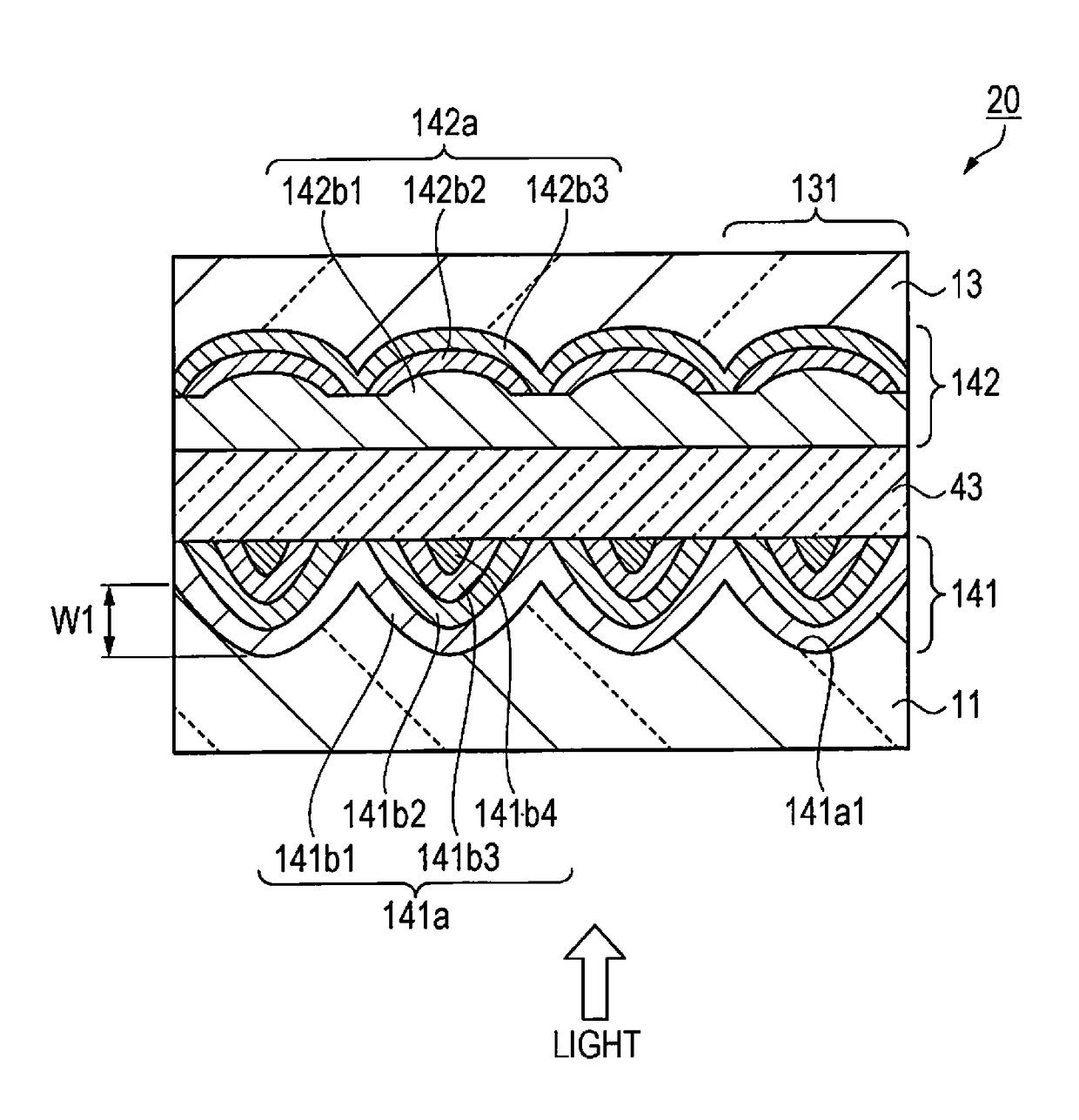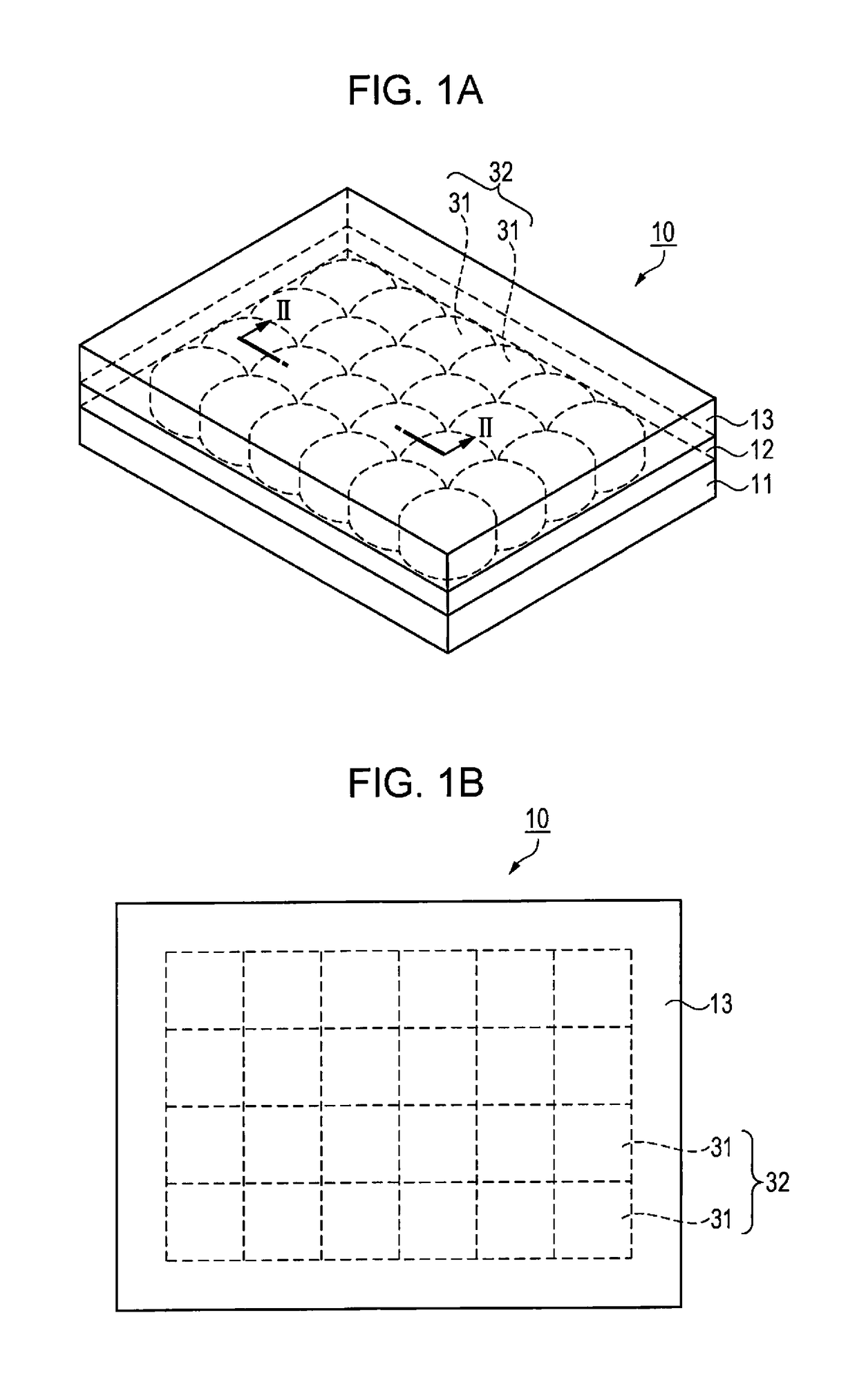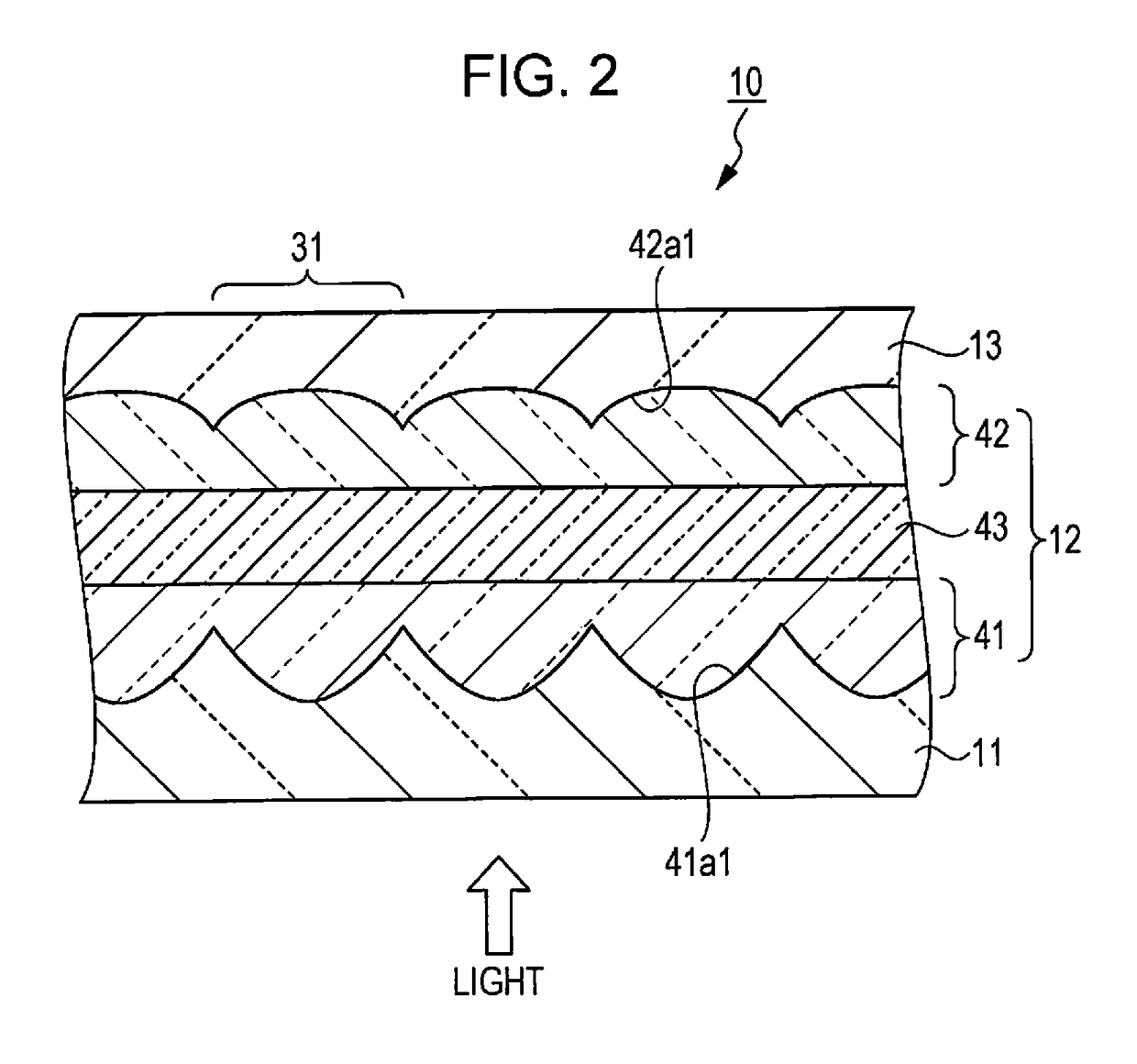Microlens array substrate, electrooptical device including microlens array substrate, projection type display apparatus, and manufacturing method of microlens array substrate
a microlens array and electrooptical device technology, applied in the field of microlens array substrates, can solve the problems of microlens array substrate warping or deformation due to thermal expansion, microlens array substrate quality decline, display quality reduction,
- Summary
- Abstract
- Description
- Claims
- Application Information
AI Technical Summary
Benefits of technology
Problems solved by technology
Method used
Image
Examples
first embodiment
[0047]In the embodiment, an active matrix type liquid crystal device including a thin film transistor (TFT) as a switching element of a pixel will be described as an example of an electrooptical device including a microlens array substrate. This liquid crystal device, for example, can be suitably used as an optical modulation unit (liquid crystal light bulb) of a projection type display apparatus (liquid crystal projector) which will be described later.
Configuration of Microlens Array Substrate
[0048]FIGS. 1A and 1B are schematic views showing a configuration of the microlens array substrate. FIG. 1A is a schematic perspective view showing the configuration of the microlens array substrate. FIG. 1B is a schematic plan view of the microlens array substrate of FIG. 1A in a top view. FIG. 2 is a schematic sectional view of the microlens array substrate shown in FIG. 1A taken along line II-II. Hereinafter, the configuration of the microlens array substrate will be described with referenc...
second embodiment
Configuration of Microlens Array Substrate
[0110]FIG. 9 is a schematic sectional view showing a configuration of a microlens array substrate of a second embodiment. Hereinafter, the configuration of the microlens array substrate will be described with reference to FIG. 9.
[0111]A microlens array substrate 20 of the second embodiment is different from the microlens array substrate 10 of the first embodiment in that the first lens 41a and the second lens 42a are laminated by a plurality of different refractive index layers, and the other parts thereof are substantially the same. Accordingly, in the second embodiment, the parts different from that of the first embodiment will be described in detail and the description of the other overlapping parts will be suitably omitted.
[0112]As shown in FIG. 9, the microlens array substrate 20 of the second embodiment includes the light transmitting substrate 11, a first lens layer 141 including a plurality of microlenses 131, the light transmitting ...
modification example 1
[0135]As described above, there is no limitation of using the liquid crystal device 100 as the electrooptical device, and an organic EL device, a plasma display, an electronic paper (EPD), or an imaging device such as a CCD or a CMOS may be used.
PUM
| Property | Measurement | Unit |
|---|---|---|
| refractive index | aaaaa | aaaaa |
| refractive index | aaaaa | aaaaa |
| thickness | aaaaa | aaaaa |
Abstract
Description
Claims
Application Information
 Login to View More
Login to View More - R&D
- Intellectual Property
- Life Sciences
- Materials
- Tech Scout
- Unparalleled Data Quality
- Higher Quality Content
- 60% Fewer Hallucinations
Browse by: Latest US Patents, China's latest patents, Technical Efficacy Thesaurus, Application Domain, Technology Topic, Popular Technical Reports.
© 2025 PatSnap. All rights reserved.Legal|Privacy policy|Modern Slavery Act Transparency Statement|Sitemap|About US| Contact US: help@patsnap.com



